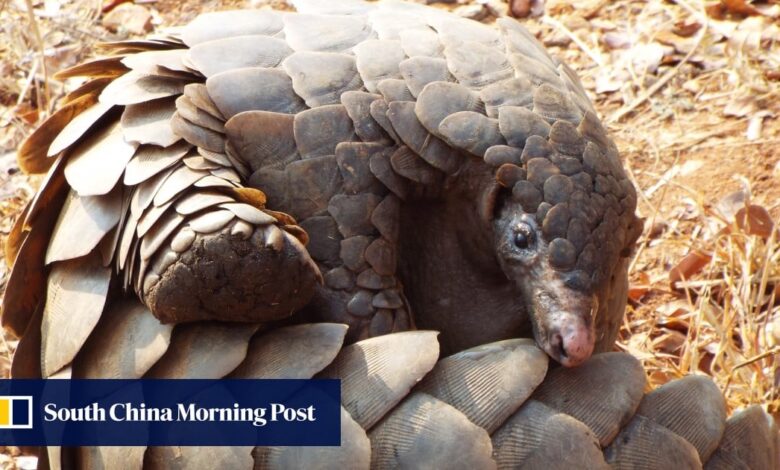Poaching a ‘major, overlooked threat’ to biodiversity in China, study finds

[ad_1]

More than one-fifth of amphibian, reptile, bird and mammal species in China are being poached, mostly for food and traditional medicines, according to an analysis of court convictions for illegal hunting.
Researchers looked at more than 9,200 convictions from 2014 to 2020 for the study. They found that just 5 per cent of them – mainly in the eastern and central parts of China – accounted for 90 per cent of the animals that were hunted, pointing to large commercial poaching operations.
The team from Sun Yat-sen University in southern China, and Princeton University and the University of Tennessee in the United States warned that poaching “has the potential to foster zoonotic disease outbreaks, especially in hunting hotspots”.
Vietnam jails pangolin and rhino parts smuggler for 13 years
Vietnam jails pangolin and rhino parts smuggler for 13 years
They said one-quarter of traded mammals globally hosted three-quarters of known zoonotic viruses.
Their analysis of wildlife-related court convictions in China – involving more than 3 million individual animals and more than 670 species – was published in the peer-reviewed journal Nature on Wednesday.
“Our results suggest that illegal hunting is a major, overlooked threat to biodiversity throughout China,” the researchers said.
“It is now clear that illegal hunting within China involves hundreds of common and threatened species, occurs throughout the country, and has the potential to cause major losses of biodiversity and significant risks to public health.”
China is one of the world’s most biodiverse countries – home to more than 3,000 vertebrate species with one-fifth of them not found anywhere else.
The scientists found that eight of the 16 most heavily hunted mammals in the court verdict database are known to harbour zoonotic viruses. Meanwhile, eight waterfowl species – swimming birds that can carry bird flu viruses – were being poached in large numbers.
They noted that more species were likely being hunted than was reflected in the court verdicts. The team estimated that at least 866 vertebrate species, or 28 per cent of all Chinese vertebrates, were hunted illegally over the six-year study period. This points to nearly 200 overlooked species.
“The reported court convictions alone do not show the true extent of the problem, because only a fraction of illegal hunting incidents was likely to be detected and prosecuted,” they said.
“This is a very conservative estimate given that, in cases involving a large number of individuals taken, not all individual animals were identified to species level. Moreover, illegal hunting incidents that involve just a few individuals might be resolved with only a fine or warning, but not prosecuted in court.”
Lead author Liang Dan, an associate researcher at the Centre for Policy Research on Energy and the Environment at Princeton University, said in the analysis that most animals were hunted to be sold as food or other products, including traditional medicines.
“We were surprised by just how many species were being hunted and how widespread illegal hunting is. We were also surprised that some of these hunters were capturing very large numbers of animals,” the field ecologist said, citing a case in which almost half a million birds were killed.
Liang said birds were mostly being hunted for food, with some of them captured alive to be sold as pets.
“Some people like to consume wild birds. Birds occur in many different habitats and some often flock together. That makes it easier for people to hunt them,” he said.
“Amphibians are often used for food or for traditional medicines. They are also relatively easy to catch because they do not fly and cannot run very fast.”
Melting glaciers set to boost biodiversity in Tibetan Plateau lakes: scientists
Melting glaciers set to boost biodiversity in Tibetan Plateau lakes: scientists
Liang said to improve wildlife protection in China, law enforcement officers should be encouraged to pay more attention to illegal hunting cases.
He said China had recently added more species to its list of protected wildlife, including some heavily hunted or traded species. But Liang’s team had noted that some threatened and near-threatened species – such as the giant spiny frog and a bird called the rustic bunting – were being heavily hunted and should be included on the list.
“The government could also ban or at least severely restrict the sale of some of the things that illegal hunters use to capture animals, such as mist nets to catch birds and electric fences to capture mammals,” Liang said.
[ad_2]
Source link





